If you’re a fan of indoor plants, you’ve probably come across the Christmas cactus.
This beautiful and vibrant plant is a popular choice for many people during the holiday season. However, like any plant, it can have its fair share of problems.
In this entire article, I will discuss the most common Christmas cactus problems and how to fix them easily.
One of the most common problems with Christmas Cactus is improper watering. Overwatering or underwatering can cause the leaves to wilt and shrivel up.
This can be due to a lack of knowledge about the plant’s watering needs or incorrect watering habits.
Another problem that Christmas cactus owners face is stem rot. Stem rot is caused by fungal or bacterial infections and can cause the plant to die if left untreated.
Other problems that Christmas cactus owners may face include a lack of flowers, buds falling off before blooming, and snapping stems.
These issues can be frustrating, especially if you’ve been looking forward to seeing your Christmas cactus in full bloom.
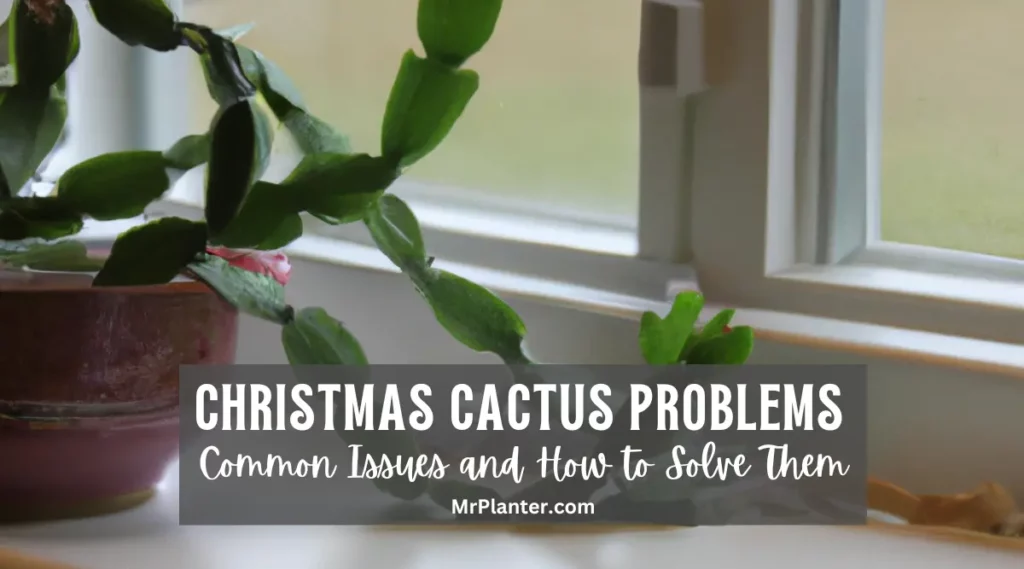
However, with a little bit of knowledge and good Christmas Cactus Care, these problems can be easily fixed.
In the following sections, we’ll explore each of these problems in more detail and provide tips on how to solve them.
Christmas Cactus Problems
Christmas Cactus Leaves are Pale or Red
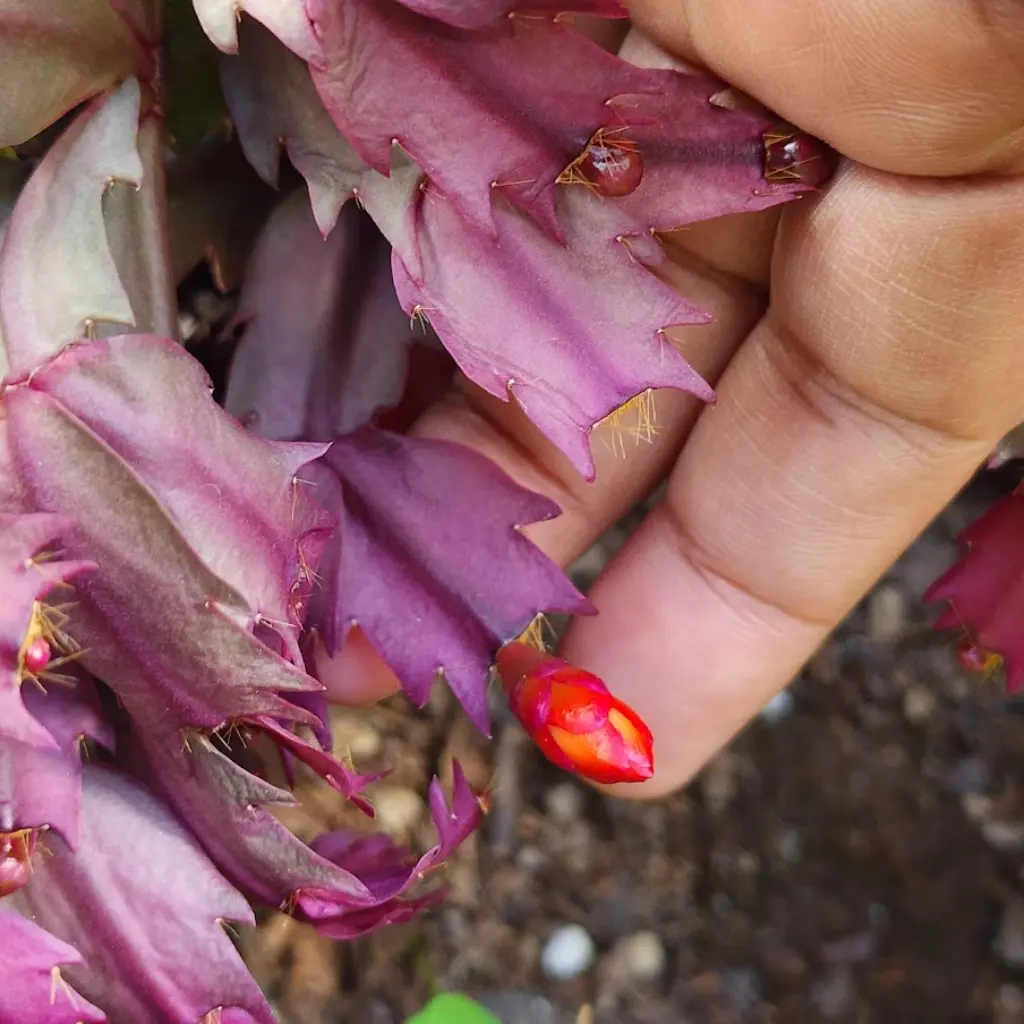
Cause
Christmas cactus leaves may turn pale and then get a slight red tint if they are getting too much direct sunlight.
The red tint on the Christmas Cactus leaves can be pretty and generally looks good. It’s safe to have a red tint but make sure that it isn’t getting burnt. We need to keep in mind that Christmas Cactus are tropical cacti and not desert cacti. So, their adaptation is according to that.
Other reasons for red leaves include bright sunlight, growth of new segments, incorrect feeding, excessive watering, and hypothermia.
Fix
If your Christmas cactus leaves are turning pale, move them to a shadier spot or filter the light.
If the leaves are turning red, move them to a spot with less direct sunlight. If the plant is getting burnt, move it to a shadier spot or filter the light.
If the red leaves are due to bright sunlight, growth of new segments, incorrect feeding, or excessive watering, adjust the care and feeding of the plant accordingly. If hypothermia is the cause, move the plant to a warmer spot.
It is also important to make sure that the Christmas cactus is not overwatered. Overwatering can cause root rot, which can lead to pale and red leaves.
Make sure the soil is well-draining and allow the soil to dry out between watering. Fertilize the plant with a balanced fertilizer every 2-3 weeks during the growing season.
If you notice that the plant is not responding to the care and feeding adjustments, it may be time to repot the plant.
Repotting can help to refresh the soil and remove any root rot that may be present.
Christmas Cactus Leaves are Limp & Droopy

Cause
If you notice that the leaves of your Christmas cactus are limp and droopy, it could be due to several reasons:
- Inadequate watering: Christmas cacti require watering once or twice a month. If the soil is bone dry, the leaves become limp, indicating a severe lack of water.
- Too much watering: Overwatering can cause the roots to rot, leading to limp and droopy leaves.
- Poor drainage: Poor drainage and soggy roots can make Christmas Cactus very limp.
- Heat stress: High temperatures and stress on leaves are very common reasons for Leaves being limp and droopy.
Fix
If your Christmas cactus leaves are limp and droopy, here are some fixes:
- Watering: Make sure to water your Christmas cactus once or twice a month, allowing the top 2 inches of soil to dry out between waterings. In cold rainy seasons, you can extend the time between watering further, provided the potting mixture is wet.
- Repotting: If the soil is soggy, re-pot your Christmas cactus into fresh soil.
- Drainage: Make sure your Christmas cactus has good drainage. Ensure that the pot has drainage holes and that the soil is well-draining.
- Shade: If your Christmas cactus has leaves that appear to be parched or scorched, move it to an area with more shade, particularly in the afternoon.
- Temperature: If your Christmas cactus is experiencing heat stress, move it to a cooler location.
By following these simple steps, you can revive your Christmas cactus and keep its leaves looking healthy and vibrant.
Christmas Cactus Leaves are Shriveled or Wilted
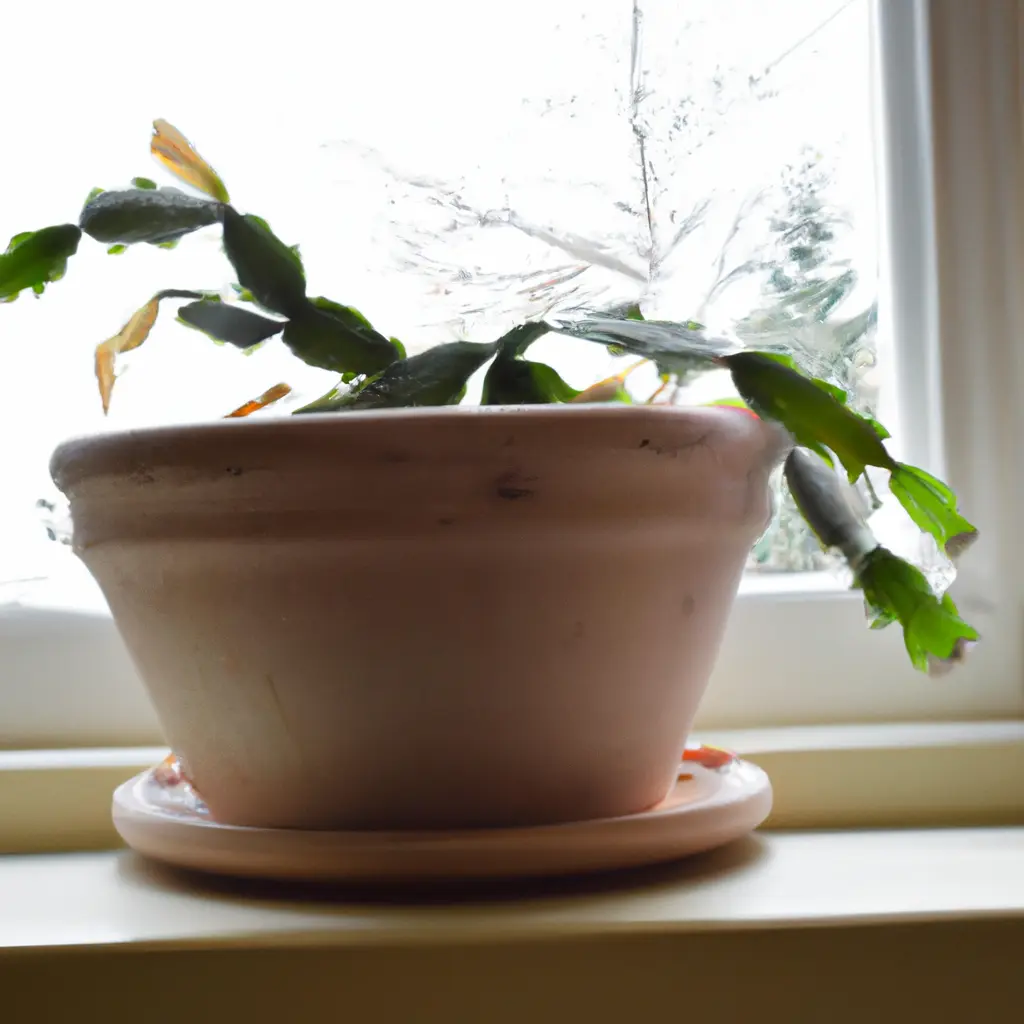
Cause
Wilted or shriveled leaves are a common problem with Christmas cactus. The most common cause of this issue is improper watering.
When the leaves are not getting enough water or are getting too much water, they will start to wilt and shrivel up. This can be caused by a variety of factors, including:
- Underwatering
- Overwatering
- Improper drainage
- Low humidity
- Exposure to extreme temperatures
Fix
If your Christmas cactus leaves are wilted or shriveled, there are a few things you can do to fix the problem:
- Watering: Check the soil moisture level and adjust the watering accordingly. Ensure that the soil is moist but not waterlogged. Water the Christmas Cactus properly but remember to drain the excess water away.
- Humidity: Increase the humidity around the plant by placing a tray of water nearby or misting the leaves with water.
- Temperature: Ensure that the plant is not exposed to extreme temperatures. Keep it away from drafts and direct sunlight.
- Fertilizer: Apply a balanced fertilizer every month during the growing season to provide the plant with essential nutrients.
- Repotting: If the plant is root-bound or the soil is compacted, repot it in fresh soil and a larger pot.
By following these steps, you can revive your Christmas cactus and restore its health and vitality.
Christmas Cactus Stems are Falling Off
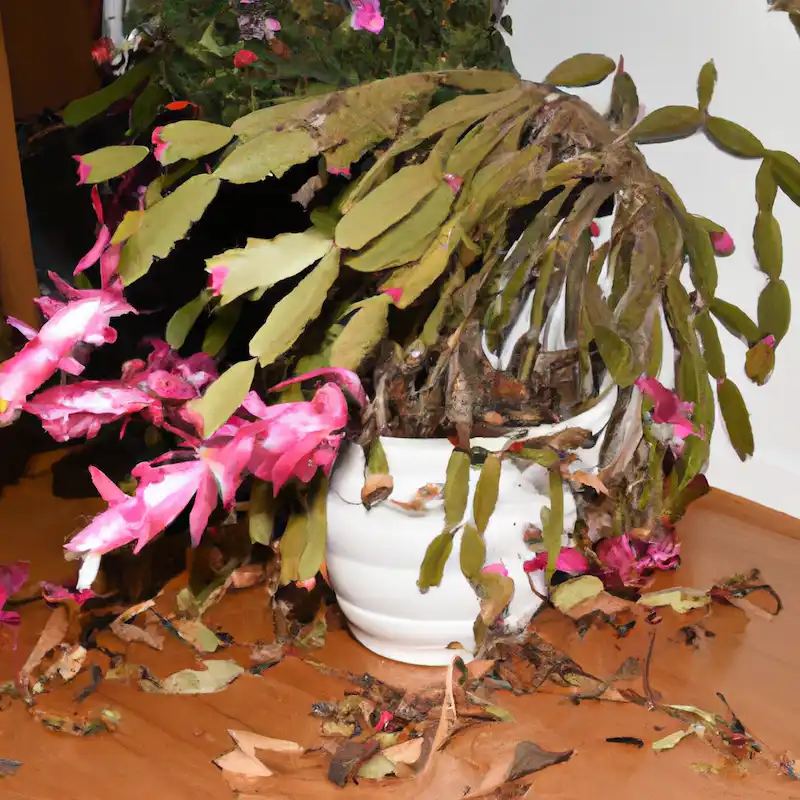
Cause
If you notice that the stems or leaves of your Christmas cactus are falling off, it could be due to root or stem rot at the base of the plant.
This is caused by overwatering or poorly draining soil, which can lead to the roots becoming waterlogged and eventually rotting.
Another cause could be insufficient light, which can weaken the stems and cause them to fall off.
Fix
If your Christmas cactus stems are falling off due to root or stem rot, you will need to take immediate action to save the plant.
First, remove the plant from its pot and inspect the roots for any signs of rot or damage. Trim away any affected roots with a clean, sharp pair of scissors or pruning shears.
Repot the plant in fresh, well-draining soil and water sparingly until the plant has had a chance to recover.
To prevent future rot, make sure to water your Christmas cactus only when the top inch of soil is dry. Avoid overwatering and make sure the soil has good drainage.
Additionally, make sure your plant is getting enough light. Christmas cacti prefer bright, indirect light, so consider moving your plant to a brighter location if necessary.
If your Christmas cactus stems are falling off due to insufficient light, consider moving your plant to a brighter location.
Make sure your plant is getting at least 12-14 hours of darkness each day to encourage blooming.
Overall, it’s important to pay close attention to the care of your Christmas cactus to prevent stems from falling off.
By providing the right amount of water, light, and nutrients, you can help your plant thrive and avoid common problems like stem rot and falling stems.
Christmas Cactus Flower Buds Fall off Before Blooming
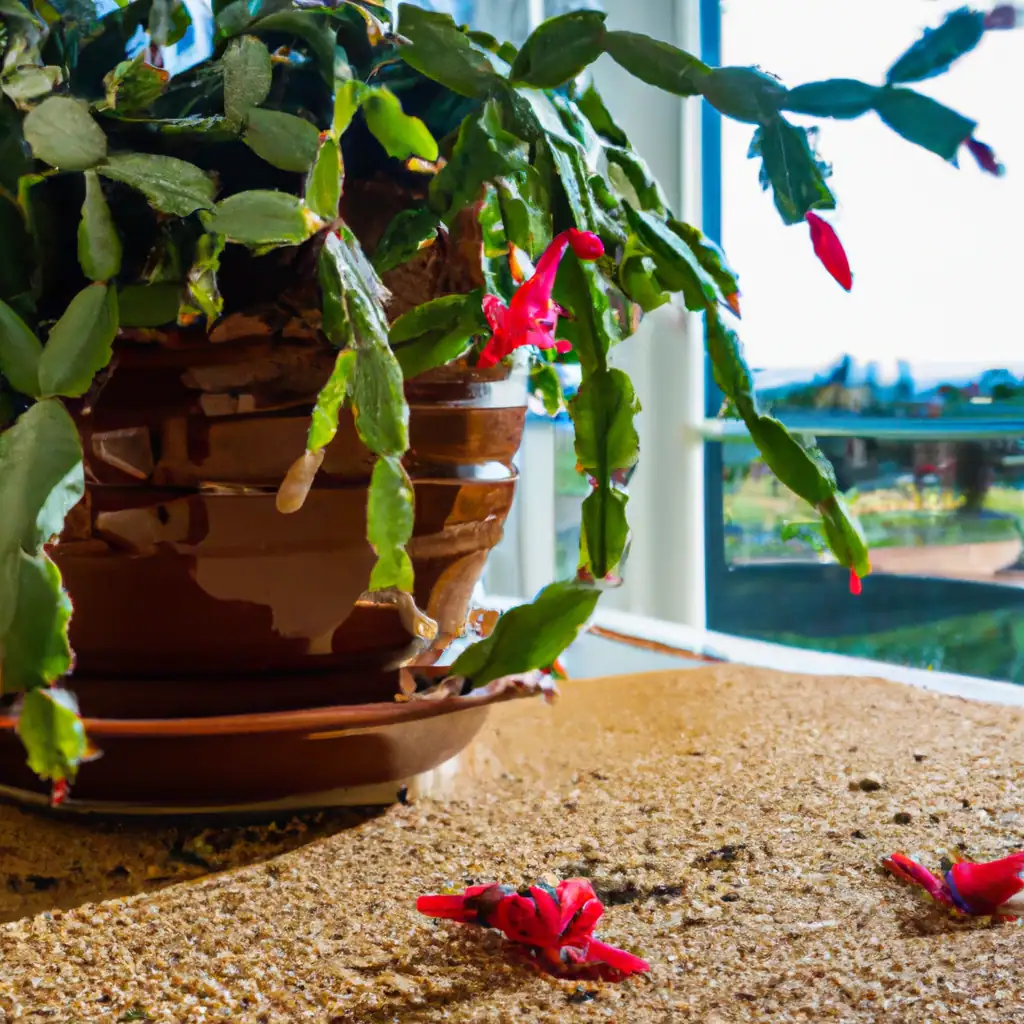
Cause
One of the most common problems with Christmas cacti is that their flower buds fall off before they fully bloom. This can be frustrating for plant owners, but there are a few reasons why this might happen:
- Drought stress: Christmas cacti need regular watering, and if they don’t get enough water, their flower buds may fall off.
- Fluctuating temperatures: Christmas cacti prefer consistent temperatures and can be sensitive to changes. If the temperature fluctuates too much, the buds may fall off.
- Artificial light: Christmas cacti need 12 hours of uninterrupted darkness to bloom. If they are exposed to artificial light during this time, their buds may fall off.
- Incorrect moisture: Overwatering or underwatering can both cause Christmas Cactus flower buds to drop.
- Drafty conditions: Christmas cacti prefer a stable environment and can be sensitive to drafts. If they are exposed to drafts, their buds may fall off.
Fix
If your Christmas cactus is dropping flower buds, there are a few things you can do to fix the problem:
- Water your plant regularly, but don’t overwater it. Make sure the soil your Christmas Cactus is in has moisture in it. But, check that it should not be waterlogged, otherwise, it may cause root rot.
- Keep your Christmas cactus in a consistently warm location, away from drafts and extreme temperatures.
- Make sure your plant gets 12 hours of uninterrupted darkness each day. If necessary, cover it with a cloth or move it to a darker location.
- Check the moisture level of the soil regularly and adjust your watering schedule as needed.
- Avoid exposing your plant to drafts. Keep it in a stable environment where the temperature and humidity are consistent.
By following these tips, you can help your Christmas cactus bloom fully and avoid the frustration of dropped flower buds.
Christmas Cactus Not Flowering
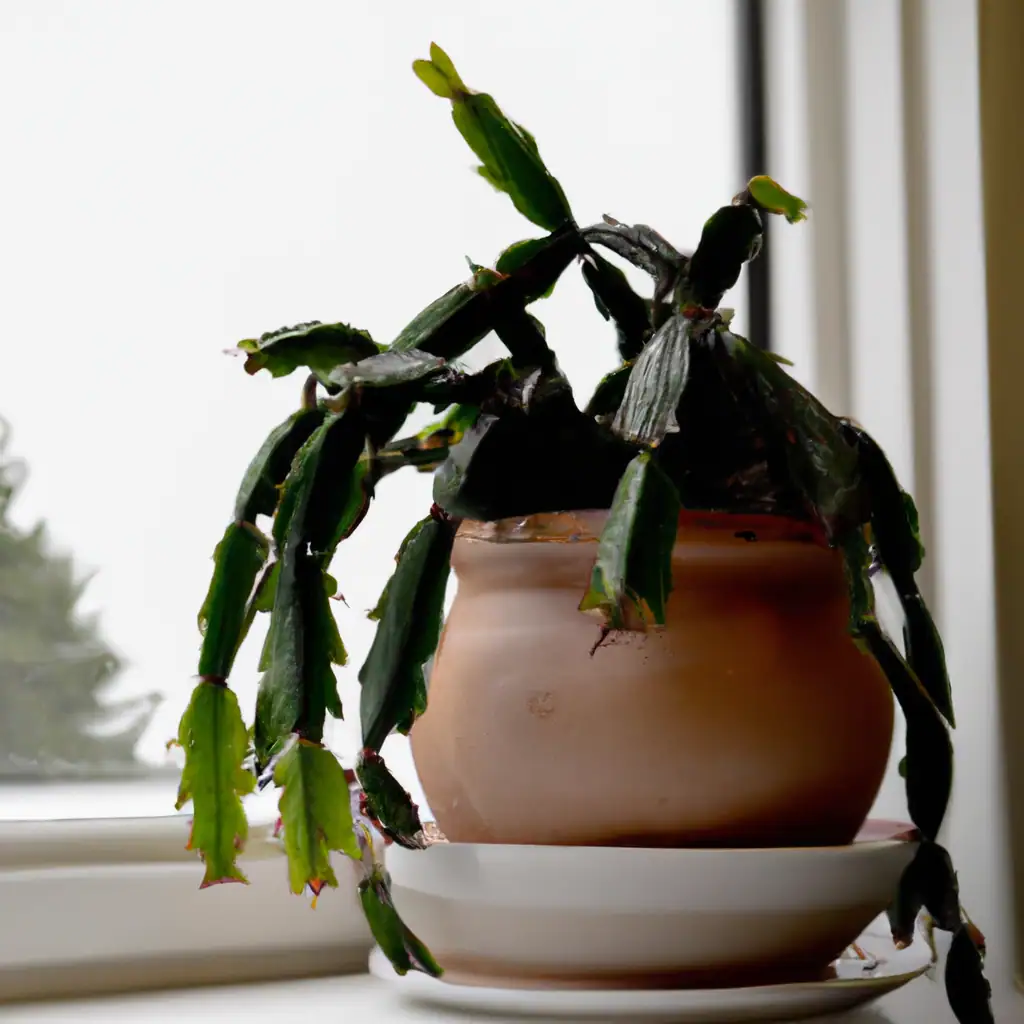
Cause
If you’re having trouble getting your Christmas cactus to bloom, there are several potential causes to consider.
One common cause is a lack of light. Christmas cacti need bright, indirect light to bloom. If the plant isn’t getting enough light, it may not produce flowers.
On the other hand, if the plant is getting too much light, it may not bloom either.
Another potential cause of a Christmas cactus not blooming is temperature.
The plant needs to be kept in a cool environment with temperatures between 60 and 70 degrees Fahrenheit. If the plant is exposed to high temperatures, it may not bloom.
Overwatering can also be an issue for Christmas cacti. If the soil is too moist, it can cause root rot and prevent the plant from blooming.
Additionally, overfertilization can lead to an excess of nitrogen, which can cause the plant to produce foliage instead of flowers.
Fix
If your Christmas cactus isn’t blooming, there are several steps you can take to address the issue.
First, make sure the plant is getting enough light. If it’s not, move it to a brighter location, but avoid direct sunlight.
Next, check the temperature of the room where the plant is located. If it’s too warm, move the plant to a cooler location.
Make sure you’re not overwatering the plant. Allow the soil to dry out between waterings, and make sure the pot has adequate drainage.
If you suspect overfertilization is the issue, switch to a balanced fertilizer and follow the recommended application instructions.
Finally, be patient. Christmas cacti can take several weeks to bloom, so don’t panic if you don’t see flowers right away.
With a little care and attention, your Christmas cactus should bloom beautifully.
Christmas Cactus Root Rot Issue
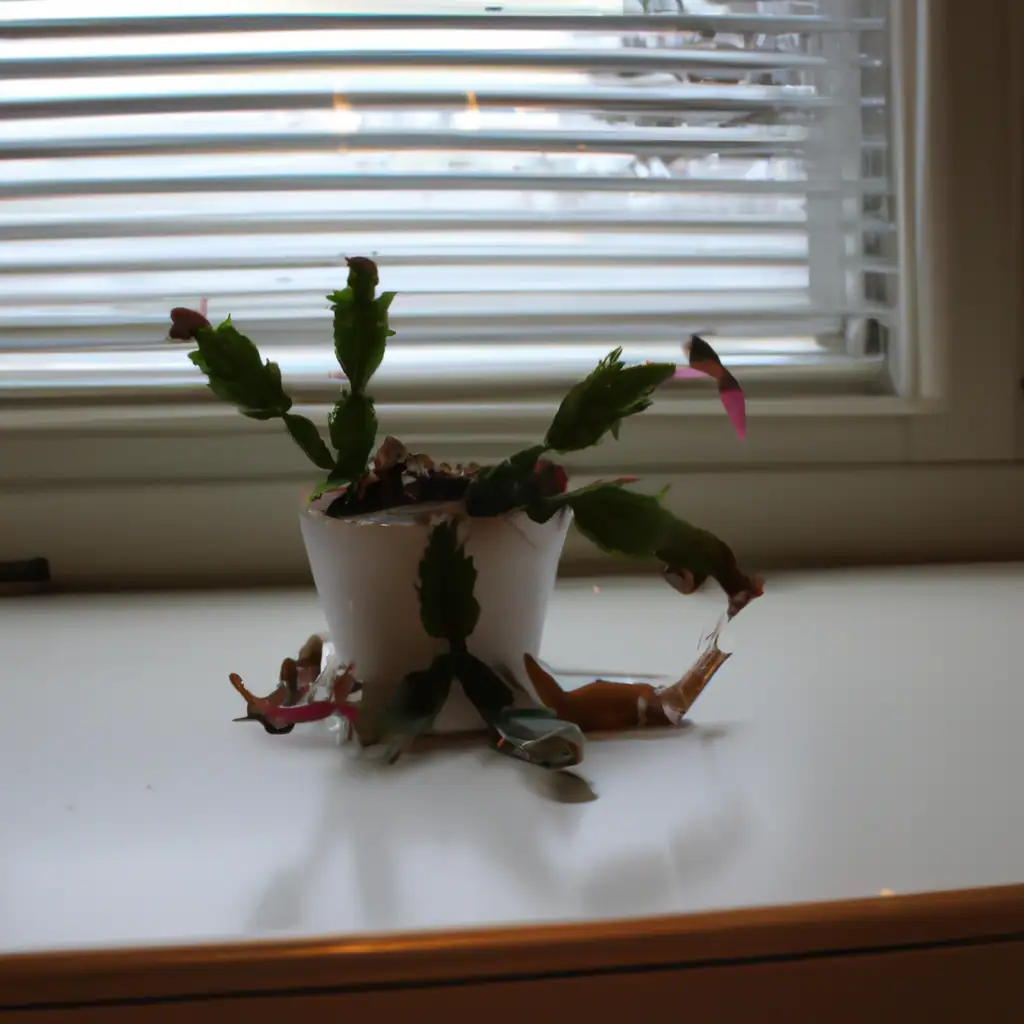
Root rot is a common problem faced by Christmas cactus owners. It is caused by overwatering, using the wrong type of soil, or pests.
If left untreated, it can cause the plant to wilt, turn yellow, or develop soft, brown spots.
Cause
Overwatering is the most common cause of root rot in Christmas Cactus.
When the soil is constantly wet, it can lead to the roots becoming waterlogged and unable to absorb the necessary nutrients.
Using the wrong type of soil can also cause root rot. Christmas cactus requires well-draining soil that is rich in organic matter.
A soil that is too heavy and does not drain well can cause the roots to rot. Pests such as fungus gnats and mealybugs can also cause root rot by damaging the roots.
Fix
The first step in fixing root rot is to remove the plant from the soil and inspect the roots.
If the roots are brown and mushy, they should be trimmed back to healthy tissue. The plant should then be replanted in fresh, well-draining soil.
Ensure that the soil is not too heavy and that it drains well. Water the plant only when the soil is dry to the touch.
If pests are the cause of root rot, they should be treated with an appropriate insecticide.
Prevention is key to avoiding root rot. Avoid overwatering and ensure that the soil is well-draining.
Use a soil mix that is specifically designed for cacti and succulents. If pests are a problem, inspect the plant regularly and treat any infestations promptly.
By taking these steps, you can prevent and fix root rot in your Christmas cactus and ensure that it remains healthy and vibrant for years to come.
What does a sick Christmas cactus look like?
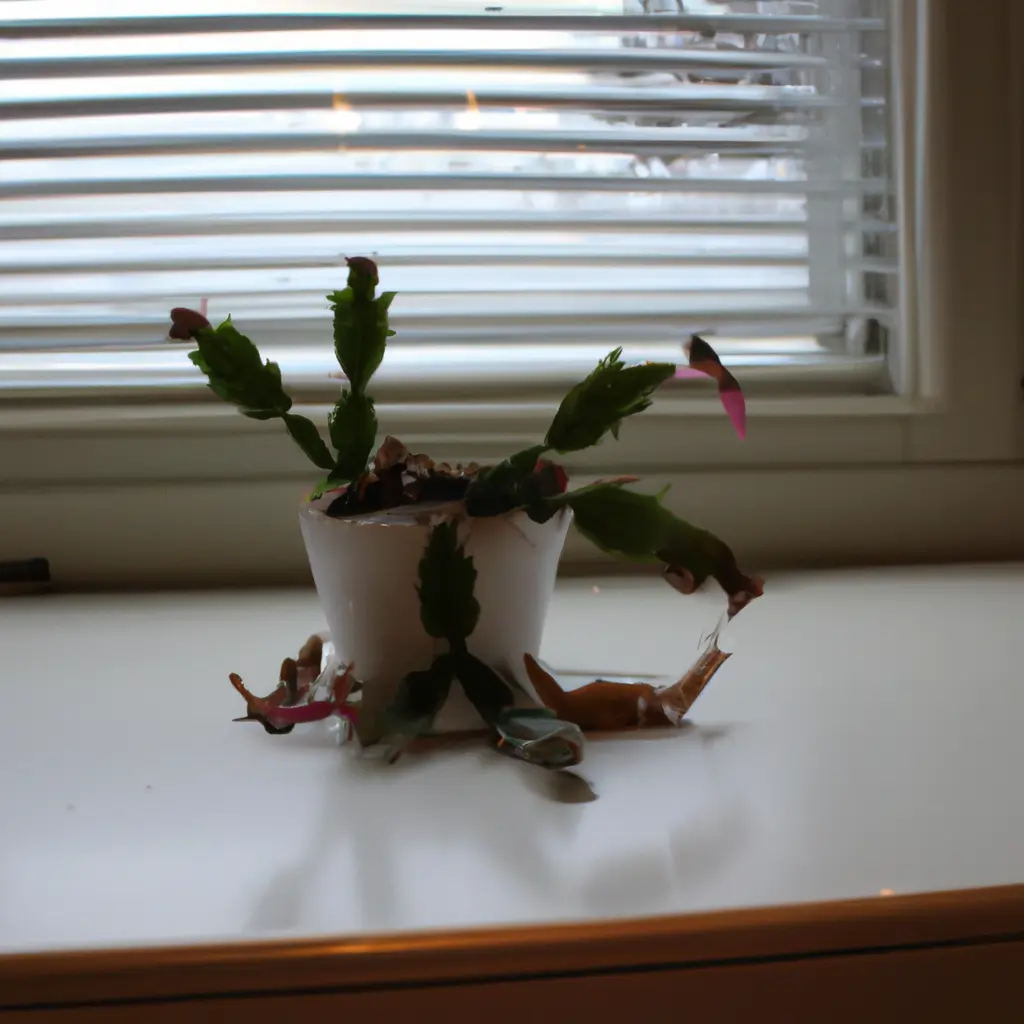
Christmas cacti are generally easy to care for, but they can still fall ill. It’s important to be able to recognize the signs of a sick Christmas cactus so you can take action to save it. Here are some common symptoms to look out for:
- Wilting or drooping leaves: If your Christmas cactus has leaves that are limp or drooping, it may be a sign of overwatering or underwatering your Christmas Cactus. Check the soil moisture level and adjust your watering schedule accordingly.
- Yellowing or browning leaves: Yellow or brown leaves can be a sign of several issues, including overwatering, underwatering, or exposure to extreme temperatures or drafts. Inspect your plant and its environment to determine the cause.
- Stunted growth: If your Christmas cactus isn’t growing as quickly as it should, it may be a sign of nutrient deficiencies or inadequate light. Consider fertilizing your plant or moving it to a brighter location.
- Fungal growth: If you notice any fungal growth on your Christmas cactus, such as mold or mildew, it may be a sign of overwatering or high humidity. Take steps to improve air circulation and reduce moisture levels.
- Pests: Christmas cacti can be susceptible to a variety of pests, including spider mites, mealybugs, and scale insects. Look for signs of infestation, such as webbing, sticky residue, or small insects on the plant. To know more check this guide to know about Christmas Cactus Bugs.
If you notice any of these symptoms, it’s important to take action quickly to prevent further damage to your Christmas cactus.
In some cases, simply adjusting your watering or lighting schedule may be enough to nurse your plant back to health.
However, more serious issues may require more drastic measures, such as repotting, pruning, or treating for pests or diseases.
Steps To Fix Christmas Cactus Problems Away
Christmas cacti are beautiful plants that can bring a festive touch to your home during the holiday season.
However, they are also prone to certain problems that can cause them to wither and die if not addressed promptly.
Here are some steps that you can follow to keep your Christmas cactus healthy and beautiful:
- Provide the right amount of light: Christmas cacti need bright, indirect light to thrive. Too much direct sunlight can burn their leaves, while too little light can cause them to become weak and leggy. Place your cactus near a north or east-facing window, or provide it with artificial light if necessary. Check the Christmas Cactus light requirement guide.
- Water your cactus properly: Overwatering and underwatering are two common problems that can affect Christmas cacti. Water your cactus only when the top inch of soil feels dry to the touch, and make sure to drain any excess water from the saucer to prevent root rot.
- Fertilize your cactus: Christmas cacti benefit from regular fertilization during the growing season. Use a balanced, water-soluble fertilizer once a month from spring to fall, and reduce the frequency during the winter months. To know more about fertilizing, check this guide for proper Christmas Cactus Fertilizer requirements.
- Provide the right temperature: Christmas cacti prefer temperatures between 60 and 70 degrees Fahrenheit. Avoid exposing them to extreme heat or cold, as this can cause them to drop their buds or leaves.
- Prune your cactus: Pruning your Christmas cactus can help promote bushy growth and prevent it from becoming leggy. Use clean, sharp scissors to remove any dead or damaged branches, and pinch back new growth to encourage branching.
By following these simple steps, you can help keep your Christmas Cactus Problems out and keep your Christmas cactus healthy and beautiful for years to come.
